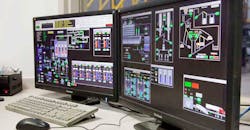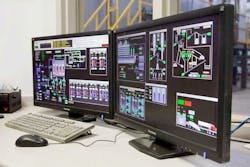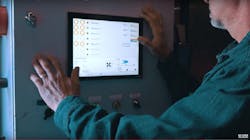Boiler Technology Just Keeps Evolving
By Scott Lynch
American Boiler Manufacturers Association
Many would be surprised to know that boiler technology continues to evolve. A boiler system installed just 10 years ago is not taking advantage of some significant advances from the industry that will result in increased productivity, enhanced connectivity, reduced emissions and most importantly, advancements in safety.
Through new boiler technology, significant progress has been made to achieve multiple fuel flexibility, lower emissions, higher turndown, longer lifespan, and stable burner system operation in today’s boilers.
While a full boiler system upgrade will get you the most up-to-date technology and greatest efficiency, upgrades or retrofits can also have an immediate impact. Boiler systems can improve in efficiency and turndown capability by replacing an obsolete burner and control system. Taking this step can reduce boiler emissions and address safety issues.
Today’s advanced control and burner systems are far more user-friendly to operate. These systems can monitor many processes in the boiler system and bring fluctuations to the attention of the operator. Many of these systems also include remote monitoring feature.
Many boilers today are being operated by antiquated control systems. Today’s advanced control systems are PLC-based platforms that incorporate burner management and combustion control (e.g., parallel positioning, O2 trim, VSD control, draft control) into one integrated package.
Another benefit of an advanced control system is that the data gathered can be used to calculate boiler system efficiency and energy consumption while also providing alarm notifications to maintain safety. Advanced communication capabilities are incorporated with these systems to communicate all data and alarm points to operators and management via email, text, an internal building management system, etc.
Recent advances in burner management will bring better end-user efficiency, saving on fuel costs along with enhancing the safety of the system.
One specific example of recent advances is the linkageless control system, which uses a burner with which to control fuel and air ratios and provide more savings to the end user. This technology brings higher efficiencies, better monitoring of the entire system — including shutdown if out of range — and automatic adjustments for air and fuel changes.
Another example is the ability to monitor individual burners in a multi-burner environment. This enables an end user to assess combustion quality and burner performance. In this situation, a flame scanner is used to send real-time combustion data analysis. Software used with scanners presents the data effectively in user-friendly formats, aiding indication of inefficient operation and/or potentially hazardous situations.
These examples illustrate the continuing evolution in boiler technology. Regular boiler system assessments ensure that end users are taking advantage of opportunities that could offer significant efficiency gains, save on energy costs and address safety issues.
For a list of leading manufacturers, visit ABMA’s new online directory of ABMA members at abma.inloop.com.
Based in Vienna VA, the author was appointed President & CEO of the American Boiler Manufacturers Association in June 2014. He oversees the day-to-day operations of ABMA and partners with its Board of Directors to map out the strategic direction for the group.




